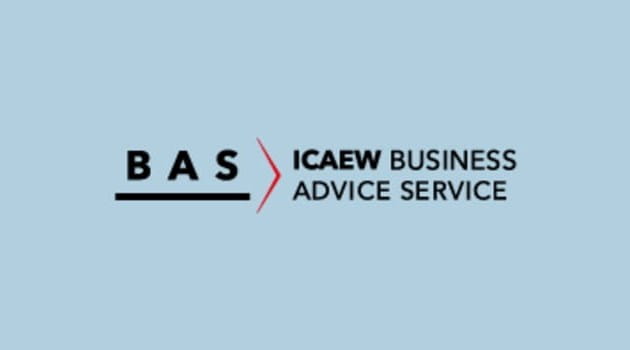For Luma Saqqaf, CEO of Ajyal Sustainability Consulting, a business’s environmental, social and governance (ESG) policy is wedded to the finance function as soon as it is introduced.
“Companies that have embarked on an ESG journey, especially the bigger ones, have begun to understand that any shift they make in this field will have a direct impact on their business model and therefore finances,” she says. “The finance function must deal with all the risks and opportunities that stem from an ESG strategy or pledge.”
A company can commit to net zero, but that’s the easy part, she explains. To make that a reality, it must shift its operations. This may entail changing machinery or transitioning to renewables; measures that come at a cost.
MHA Partner Mark Lumsdon-Taylor notes that an ESG policy dramatically broadens the dataset that the finance function must examine. “All data in one form or another will have a financial implication,” he says. “So ESG data can be almost any kind, covering topics such as energy, emissions, expenditure and revenue, capital values for resources and investment, plus non-financial disclosures (NFDs), and any information on sustainable development.”
Lumsdon-Taylor points out that key NFD considerations – for example, the scoping of social and governance values – are often forgotten. It is vital for the finance function to work with HR and the board to ensure such points are not overlooked.
“Strong finance functions will have systems and processes in place for quarterly reporting, plus a baseline for annual reporting,” Lumsdon-Taylor says. “Management reporting should be linked to those systems. Audit and finance committees should request the above types of ESG data at least biannually to ensure the business is ESG compliant. And larger businesses should consider independent assurance to validate their data.”
Non-standard metrics
According to Vineta Bajaj – Group CFO of pan-European e-grocer Rohlik Group – any finance function that is incorporating an ESG lens into its systems for the first time will typically encounter four main challenges:
1) Data accessibility and quality
As ESG involves non-traditional metrics, the finance function will run into issues around comparability, accuracy and consistency.
2) Standardisation
“ESG policy-setting and reporting are subjective and determining the nature of that reporting is up to each business,” says Bajaj. While guidance is available from protocols such as IFRS S1 and S2 – plus the recommendations of the Task Force on Climate-related Financial Disclosures (TCFD) – the lack of uniformity presents issues around justifying reporting decisions to external third parties tasked with validating your data.
3) Skills gaps and the changing role of finance
“Although finance professionals are naturally numerate, having to address new, non-standard metrics with limited, annual comparisons can be challenging,” Bajaj says. “To address that ambiguity, the finance team will need to upskill.”
4) Process-related issues
Integrating ESG KPIs into your existing financial reporting procedures, Bajaj points out, may require changes to systems and workflows.
Hurdles around gathering data from across the value chain will affect the finance function’s efficiency, warns Elena Zayakova-Williams – Senior Director, sustainability and ESG, at Sage. “Understanding where to begin is important, whether that’s with Tier 1 suppliers, Scope 3 data or even knowing which questions to ask.”
In addition, she points out, finance teams may have issues with data assurance and controls, compounded by the low maturity of the ESG-assurance market. “This is an evolving space, so capabilities, skills and practices related to ESG auditing and reporting are relatively new.”
Climate for SMEs
Climate change is affecting businesses of all sizes. ICAEW is aiming to cut through the noise by providing tools and resources for small to medium sized businesses to build resilient business models and get to grips with ESG.

Champions and collaborators
From his vantage point as board member at accountants EXCO A2A Polska (part of the Kreston Global accountancy network), Laurent Le Pajolec says that the team should identify the different frameworks through which it intends to provide ESG reporting.
“They should also identify an ESG champion within the company and whether some collaborators are interested in ESG,” he says. “Then see whether they have the required skills and experience to lead the effort. These people could be finance professionals with a strong understanding of ESG or they could come from other departments such as sustainability, risk or compliance. From there, those individuals could determine which skills are needed for reporting and communicating on ESG.”
For Zayakova-Williams, measuring ESG impacts should be a “cross-functional effort”, involving finance, risk, internal audit, legal and procurement. “It should not be viewed in a siloed fashion,” she says.
“Internal audit has an important role to play – testing the accuracy of disclosures, linking data to source documentation prior to reporting and supporting external assurance. This will help to ensure the data is rooted in relevance and accuracy.”
Finance teams must clearly define the format and frequency of reporting, the relationship between stakeholders and ESG metrics, Le Pajolec says. “The chosen reporting framework should define the metrics that will be reported, the frequency of reporting and the format of the reports. And because ESG reporting is an evolving field, it’s important to implement a process for continuous improvement. That should include regular reviews of the reporting framework, as well as the data and metrics you are reporting.”
Smooth transition
To minimise disruption in the initial phase of ESG reporting, says Lumsdon-Taylor, finance leaders should approach the process in three stages.
First, they must identify the regulatory requirements they are facing, the type of scope they are operating in or want to reduce and ensure the company is operating in compliance. They should also identify future compliance requirements, such as understanding and complying with TCFD. Discuss them with professional advisers to create an appropriate plan.
Leaders can then enforce the company’s adherence to the regulatory requirements and compliance plan over a three-year period using an ESG identification-of-business matrix: a lens for examining how the company’s day-to-day operations work from an ESG perspective. That should enable them to gauge progress towards climate change goals and determine which other measures they should adopt. For example, aligning with non-regulatory standards such as GRI, science-based targets and UN Sustainable Development Goals.
Once a company has complied with the relevant regulations, implemented an ESG plan and aligned with non-regulatory standards, it should consider enforcing independent assurance standards such as ISAE 3000 and ISAE 3410 to support its ESG reporting. Companies should also ensure that they seek advice from long-established providers, as they have the expertise and experience to help businesses make a smooth transition into enforcing ESG practices and reporting.
Zayakova-Williams urges finance leaders to invest in the correct technology and work closely with the sustainability team to understand evolving regulations and reporting expectations.
“They should also understand how to address materiality, how that may differ from the financial process and where there may be overlaps,” she says. “For example, the Corporate Sustainability Reporting Directive (CSRD) requires double materiality, which considers both financial and outward materiality. Plus, leaders should understand how current ESG data is being collected and reviewed within the business, and which governance processes are involved with that.”
More support for SMEs on ESG
Energy efficiency for business
The Department for Energy Security and Net Zero has launched a campaign to support business in improving their energy efficiency, including: no-cost and low-cost options, as well as potential longer term investments.





